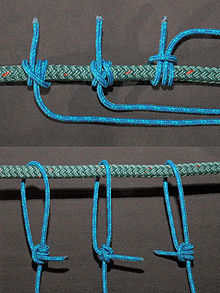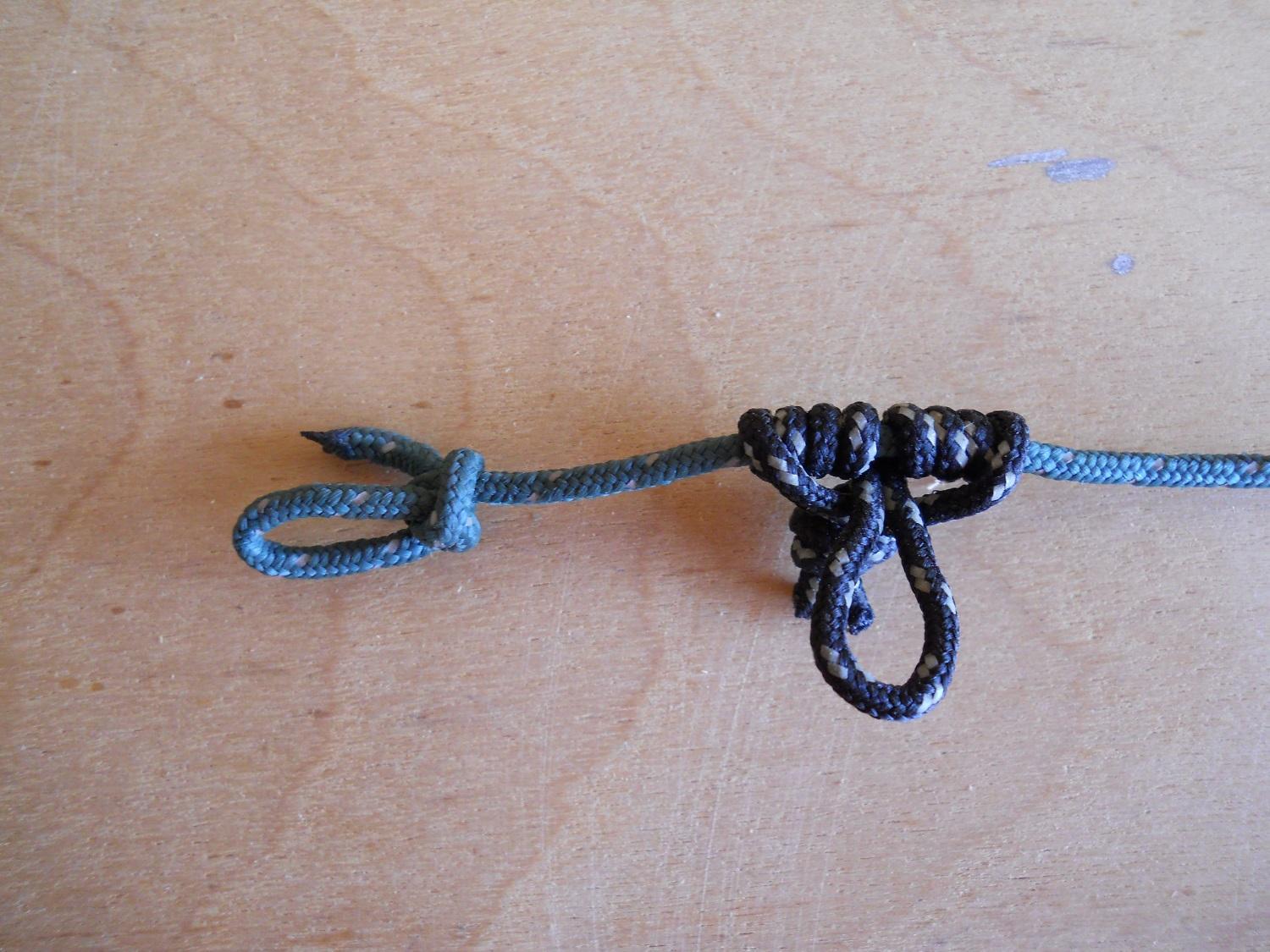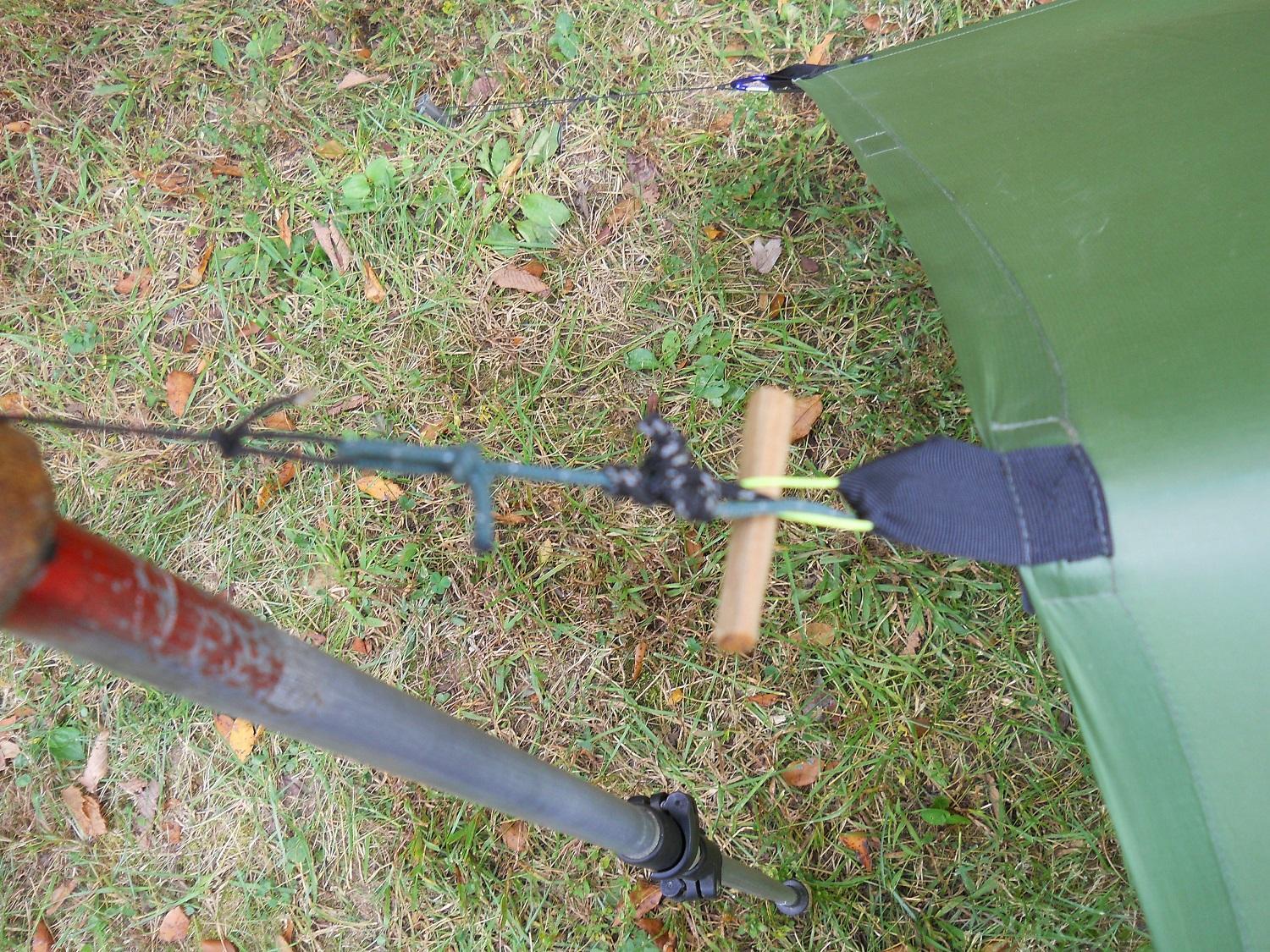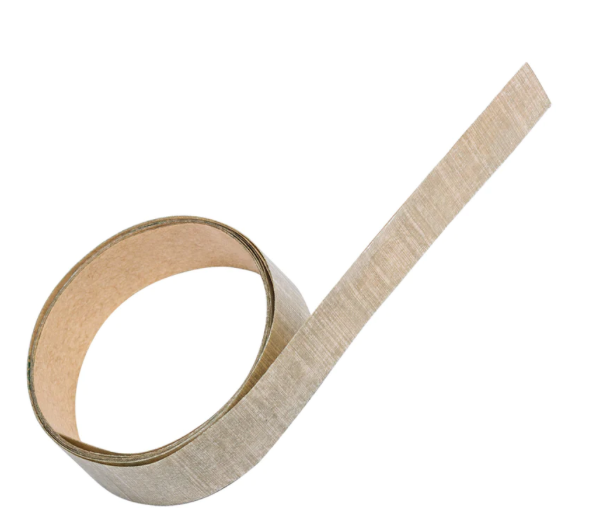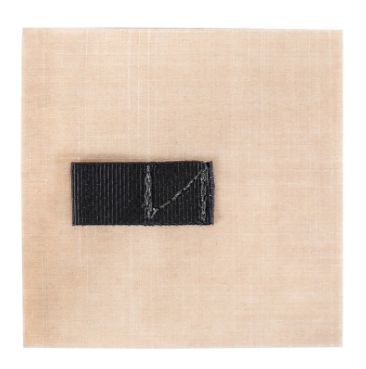Topic
How to attach a ridgeline to my tarp
Forum Posting
A Membership is required to post in the forums. Login or become a member to post in the member forums!
Home › Forums › Gear Forums › Gear (General) › How to attach a ridgeline to my tarp
- This topic has 17 replies, 9 voices, and was last updated 1 year, 4 months ago by
 Monte Masterson.
Monte Masterson.
-
AuthorPosts
-
Sep 24, 2023 at 3:43 pm #3789803
This is maybe a dumb question and I’ve searched the internet and the answers are always showing a ridgeline tied between two trees and hammock-related things and I’m not sure that what I’ve found is the best option.
I made a 6×9 DCF tarp but its center seam is on the short 6′ length. If I use it as a longer A-frame in the rain, I am worried that because there is no seam down the long length, I could damage the DCF material if I apply any force to the fabric. So I think I should use a ridgeline. What I am not sure of is how to attach it.
If I just lay the tarp over a line, what is holding the tarp tight along the ridgeline? All the examples I’ve seen use fancy knots around trees, which gives you a way to tighten the line and the tarp, but I want to use my trekking poles. And I also would like to easily remove it, not fuss around tying fancy knots when it’s raining.
Any ideas on the best way to do it?
Sep 24, 2023 at 4:04 pm #3789805Depends on how you have tie-outs on your tarp configured. If you have webbing loops as tie-outs at the mid-points of the two short sides, then I suggest running your ridgeline cord through each with a loop, so that the cord comes to the tarp, goes back through the loop heading away from the trap, and then goes under the tarp; and at the other end it comes out from under the trap, loops back through the webbing loop, and then heads away from the tarp. When you pull the cord taut, it tightens around the webbing at each point, and the webbing is trapped and will not slide easily along the cord. With some fiddling as you set it up, you can get the cord to be taking most of the tension, while the tarp takes just enough to be taut without loading it too heavily. Another way, that is more work to rig up initially but simpler in everyday use if you always rig your tarp in that configuration, is to tie your cord firmly at one loop, have the cord under to tarp and then have a shock cord loop at the other end tied into the ridgeline cord, so that the cord can be pulled as tight as you can get it while the force on the ridgeline is limited to the force that the shockcord puts on it, and that can be varied by how you rig it and the shockcord that you use. the second way also automatically adjusts for stretch in the ridgeline cord, which the first way does not. and a third way is to do like the second but with a short cord and prussik knot in place of the shockcord. That is still adjustable, but not automatic; but allows probably a bit more tension than yu can get with light shockcord.
Sep 24, 2023 at 4:11 pm #3789806assuming there are guylines on the middle of the DCF, run the ridgeline between the trees, put the DCF tarp over the ridgeline, tie the guylines to the ridgeline with taughtline hitch. Pull the taughtline hitches out to apply just the right amount of tension on the tarp so it stays in place without over stressing it.

Just the upper left knot. The big rope is the ridgeline (you can use thin line). The light blue line is the guyline to your tarp
Sep 24, 2023 at 4:15 pm #3789807I don’t like hanging the tarp over the ridge-line for the same reason as you, rubbing against the line might do damage eventually. If your tarp has tie loops on the ends next to the line I’d use a prusik loop on each end with the tarp underneath the line. It’s easy to adjust the tension with prusik loops. They simply slide along the line and hold tight. That’s one way and my fav. For the poles you can tie a figure eight loop on the line and insert the pole tips (or use the tarp loops for the pole tips) and stake out the line ends with an adjustable grip hitch on each stake. That way you can adjust tension of the line. Lining out the tarp corners will finish the set. That’s one way. Is that clear or is it confusing?
Sep 24, 2023 at 4:23 pm #3789808Whenever you have a seam that’s perpendicular to the long length of a rectangular tarp, especially one made with very light material, prusik knots are the way to go. A bit of a fiddle factor but they work great. Not only does it provide a more taut pitch but also saves material from being damaged around tieout….51 DCF is especially vulnerable.
You see military and bushcraft guys on YouTube use prusik knots for tarps but they usually have very long paracord ridgelines that attach to tress. I can’t depend on tress though so I use a special made ridge cord 2.5 mm diameter and prusik loops about 2 mm diameter. I make the cord about 7″ longer than ridgeline with bowline loops on each end. Then I can tie 1.25 mm spectra lines to loops for guy lines.

You’ll need some round sticks to act as toggles like pictured below (blurry pic) where the wood piece is under the tieout but the loop portion is outside the tieout to allow adjustment. (Tieouts on tarp pictured are different than most so I had to tie on a yellow spectra loop).

I like my loops much shorter than what you see in video below but you can visualize the concept. You’ll only need 2.
 Sep 24, 2023 at 4:38 pm #3789810
Sep 24, 2023 at 4:38 pm #3789810I don’t know if this would work.
Apply DCF tape along the center of the long side. Tape both sides.

Apply a DCF loop at the end of each for your guy lines that will attach to your trekking poles.

zPacks and other retailers sell DCF tape and accessory patches. Perhaps by reaching out to one of them they can tell you if this is a viable solution.
Sep 24, 2023 at 4:47 pm #3789811If you need some help with the knots and you carry an iPhone this app, Knots 3D, will do the trick.
Sep 24, 2023 at 6:30 pm #3789817Glen L, I think your tarp underneath thing makes sense, if I’m picturing it right, and sounds like it won’t abrade or unduly stretch out my DCF. I will try that and see if I can figure it out.
I usually use the tarp as a “wedge” shape so being able to use it as an a-frame would make it more versatile.
Sep 24, 2023 at 6:41 pm #3789818And if I’m picturing it right, I could make prussic loops attached to the line on each end and then use a mini-carabiner to attach the prussic loop to the grosgrain loop on my tarp. Then I don’t have to do any of the fancy stuff with the toggles.
Sep 24, 2023 at 7:23 pm #3789820You can indeed do it that way or you could just tie in your prusik to the whole setup, tarp loop and prusked around the line and just fold it all up ready with every line attached and all the knots tied at home. That way it would take moments to set the tarp.
When it comes to joining the prusik into a loop the fisherman’s knot is good and the double fisherman’s knot is even stronger than you’ll need. You don’t have to over stress the tarp, just get it taught. Anyway we always have every line fastened to the tarp with every knot tied and ready for action. Makes it a breeze.
Sep 24, 2023 at 7:30 pm #3789821I’m not sure having the line on top would rub any less on the DCF than underneath really. And you for sure won’t get as taut of a pitch with the line on top. I’ve tried it before and it’s funky unless you have grosgrain loop in the middle of tarp (top) to run line through. Also you can tie small rings onto your ridgeline to attach a bivy or net tent. Can’t do that when the line’s on top of course.
The mini biners might work instead of toggles, never tried it. Clever idea. But what’s more a ridgeline with prusik loops allows you to precisely adjust the tension just right and the line itself takes most of the stresses from the guylines pulling and doesn’t put it all on just the tieout. I like the prusik loops with 7D to 15D silnylons where the inevitable stretch can be easily dealt with by simply pulling the knots on each end of the ridgeline.
Sep 24, 2023 at 8:20 pm #3789823One problem with the continuous line being under the tarp is it can allow rain to run down under the tarp and drip on whatever you are attempting to keep dry.
Hammock vendors have pre-made continuous ridge-line set ups that work well. Dutchweargear is one vendor. I have DCF tarps and often use individual lines off each end. You should not “Crank down” on it as you can cause fabric separation. Some like the continuous as they can center the tarp easily over a hammock. If you go with individual lines, you have to loosen one and guess how much to let it loose, then tighten the other side and hope it’s mostly centered.
Sep 25, 2023 at 7:36 am #3789830Actually I just thought of something else I could try. I could tie loops in the ridgeline for my trekking poles just a little bit outside the fabric of my tarp. Then I could tie shock cord loops into the grosgrain loops that would loop around the tips of my trekking poles. There should be enough gentle pull to keep the tarp taught but not so much that it stresses the fabric, and then I can still use the ridgeline for my bivy.
Sep 25, 2023 at 8:09 am #3789833This works great for me (using lightweight dynema core line). There is zero tension on the tarp itself across the ridgeline and it’s very quick to set up & adjust. I’ve never had rain come down the ridgeline inside and its been in hard prolonged rain a number of times.
Sep 25, 2023 at 9:04 am #3789839good idea about prusik – more loops more friction
if the tarp was under the ridgeline, then it would be almost the same as no ridgeline – just tying out the two sides
Sep 25, 2023 at 12:02 pm #3789867“if the tarp was under the ridgeline, then it would be almost the same as no ridgeline – just tying out the two sides”
Exactly. If she is going to set it in a diamond orientation then the two corners that are lined to the ground will slightly pull the entire tarp away from the ridgeline so nothing is rubbing the tarp as it buffets and ripples in wind. That’s the plan anyway.
Diane that shock cord idea sounds interesting and you should experiment in your yard until you are satisfied. You definitely have a good understanding of what you want.
Sep 25, 2023 at 1:40 pm #3789876This is a good demonstration of how I hang my tarp using a continuous ridgeline. The tarp hangs below the line. The ridgeline takes all the tension and you only apply enough force to the tarp to suit the conditions and your pitch goals.
Of course Dutch is peddling his hardware (which is quite good) in this video, but the concepts and methods work with whatever hardware you choose.
Put up and tighten the line, attach and position the tarp. Done.
Sep 25, 2023 at 3:42 pm #3789899Just like your DCF tarp Diane, the tarp pictured below is a 6′ X 9′ with the seam running perpendicular to its long length. Doesn’t pitch in A frame mode as well as a flat tarp that has the seam running longways also serving as its ridgeline. Manufacturers often make tarps under about 7.5′ wide this way so as to produce little to no waste.
However the tarp wouldn’t pitch as taut without the ridgeline and prusik loops. They are really quite easy to use with a little practice and it allows a fine tuning on just how much tension you want to put on the material. Try it you’ll like it. Simply provides a more solid pitch overall.
-
AuthorPosts
- You must be logged in to reply to this topic.
Forum Posting
A Membership is required to post in the forums. Login or become a member to post in the member forums!
Our Community Posts are Moderated
Backpacking Light community posts are moderated and here to foster helpful and positive discussions about lightweight backpacking. Please be mindful of our values and boundaries and review our Community Guidelines prior to posting.
Get the Newsletter
Gear Research & Discovery Tools
- Browse our curated Gear Shop
- See the latest Gear Deals and Sales
- Our Recommendations
- Search for Gear on Sale with the Gear Finder
- Used Gear Swap
- Member Gear Reviews and BPL Gear Review Articles
- Browse by Gear Type or Brand.

